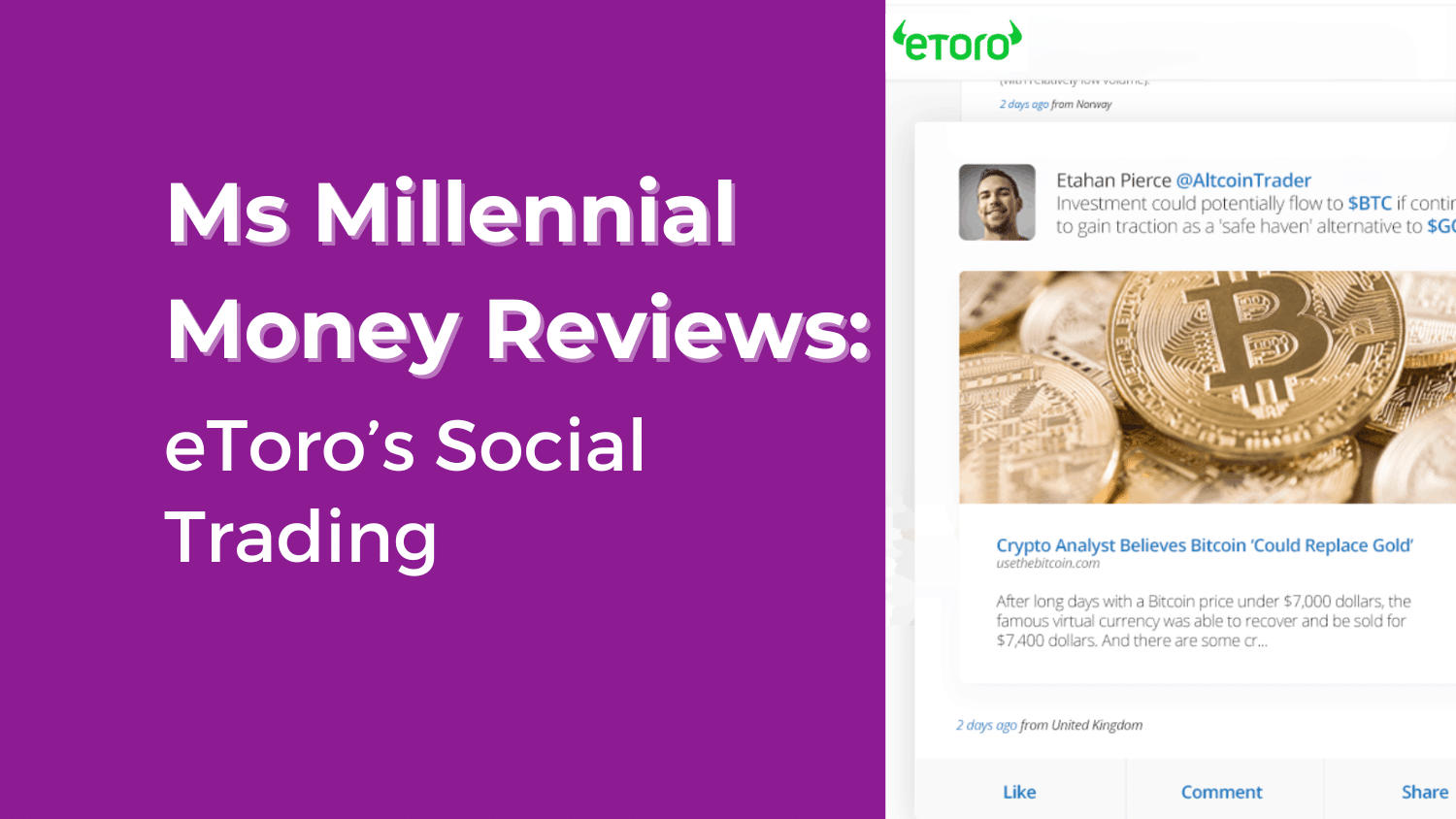The Blog
Ms Millennial Money Reviews: eToro’s Social Trading

By Ms Millennial Money, Sarah Penney
Traditionally, conversations about finance and investing were seen as the preserve of upper- and middle-class men sitting around drinking whiskey and smoking cigars.
But not anymore, the Gen Zennial, digital native, generations have turned this perception on its head, creating vast online communities to have conversations about trading, supporting and learning from one another, in true demonstration of investing.
Vibrant online communities now extend beyond social media platforms, into the environments where people are trading and investing – the investment platforms. And it’s the investment platforms with a strong social element that are attracting the biggest user bases.
eToro stands out as one of the largest investment platforms, boasting over 35 million users globally, in stark contrast to the UK’s long-standing Interactive Investor (400,000 users) and Hargreaves Lansdown (1.8 million users).
Positioned as a leader in ‘social trading,’ eToro leverages its vast user base across 140 countries to foster an active community that both supports its members and encourages them to remain within the eToro ecosystem.
The News Feed
The first feature of ‘social trading’ within the eToro universe is the News Feed, which offers a blend of social media and trading functionalities. The feed allows users to track financial instruments, follow traders of interest, and engage with the broader eToro community.
Similar to traditional social networks, users can post updates, share content, and comment on posts. The goal is to curate a feed that aligns with users’ trading and investment interests.
As a reflection of eToro’s vast user-base, the news feed is lively and varied, making it incredibly useful to both novice and experienced investors. There are dedicated feeds discussing specific companies, cryptocurrencies, indices, and more, with hundreds—sometimes thousands—of investors engaging in discussions about individual assets.
This is something companies need to make sure they understand and closely monitor – these are conversations happening amongst active investors and often they fly under companies’ radar. There’s crucial intel and opportunity here for active engagement with retail investors.
Copy Trading
Copy trading is an initiative that eToro has become well known for and is a key aspect of their social trading offering. Users select top-performing eToro traders to replicate their trades automatically.
Users can search for traders to copy, with eToro also featuring ‘Editor’s Choice’ traders to highlight popular options.
Opinions on copy trading vary. Many Reddit threads discuss this element of eToro’s functionality, highlighting that while some traders are effective, others are not so consistent. My experience is that while there are many traders that make consistent gains, there are several that have made a name for themselves with a few successful trades, but that they can’t necessarily be relied upon for consistent performance.
Although I personally wouldn’t engage in this form of social trading, it’s a hugely innovative idea and watching from the sidelines offers great learning opportunities.
The Popular Investor Program
In tandem with its copy trading feature, eToro has established a Popular Investor Program. This initiative aims to build a robust community of traders and investors by incentivising successful traders to share their insights. Those who attract more copiers are rewarded with larger payouts.
eToro views this initiative as a celebration of the democratisation of financial knowledge, allowing anyone who invests time and effort into understanding markets and developing sound investment strategies to be financially rewarded.
Again, a good way to identify interesting traders to observe and learn from their wins.
What’s the takeaway?
eToro was a first-mover in transforming basic investment platforms into social media environments, catering to nextgen investors’ needs for connection and community. The integration of social trading has likely been a major factor in the platform’s success and expansive user base.
This success underscores the power of alternative media in the democratisation of financial knowledge, with retail investors actively sharing insights and engaging cooperatively for mutual benefit.
These are the environments companies should be aware of and actively involved in to engage effectively with the next generation of investors. UK Capital Markets have been looking for funding in the same places for centuries, prioritising engagement with institutions and overlooking the contribution of retail. This paradigm has shifted in other markets, particularly in the US, and as a result, we’re seeing the US markets demonstrating an air dynamism and innovation that’s lacking over here.
Capturing the attention of, and engaging with, Gen Z and Millennial (Gen Zennial) investors has been key for many companies in the US (see Tesla, with 45% of its investors being retail), opening vast new avenues to raise capital. The key to this, which we also saw in Trump’s successful election campaign, is engagement with alternative media.
By remaining unaware and unengaged with these alternative forums, traditional financial institutions risk missing out on significant investment opportunities. According to BlackRock, Gen Zennials are now the biggest generations of investors, consisting 28% of all retail investors. It’s crucial companies meet the nextgen where they are to have an opportunity to successfully engage.